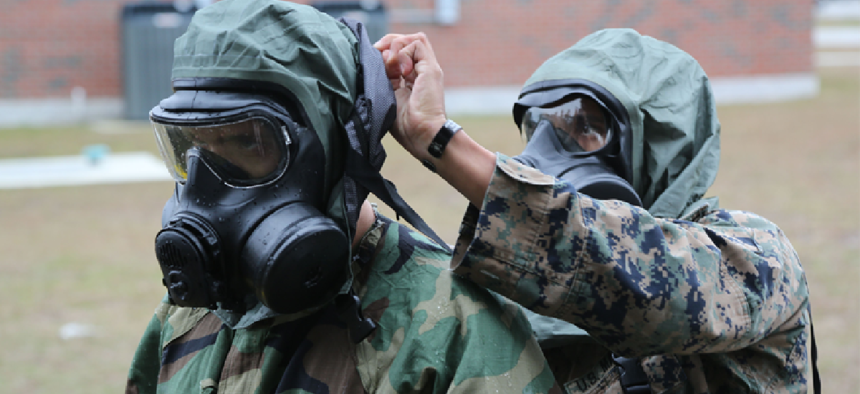High-tech polymer could better protect against chemical weapons
To help alert troops to chemical attacks, researchers are working to incorporate sensors into clothing that can detect chemical agents in the air.
To help alert troops to chemical attacks, researchers are working to incorporate chemical sensors into soldiers' uniforms that detect chemical agents in the air.
In 2017, Anastasios Angelopoulos, a professor of Chemical Engineering at the University of Cincinnati, published a paper describing how breath exhaled by diabetics onto a polymer membrane caused a reaction that created flavans, chemical compounds that changed color depending on the chemicals in the patient's breath.
Nafion, the synthetic polymer membrane used in electrolysis, mineral extraction and fuel cells, was already known to be able to limit the movement of large organic compounds, like those found in chemical warfare agents. The problem has been that the membrane was not effective in the presence of sweat, a substance soldiers have in abundance. Funding from the National Science Foundation will help Angelopoulos learn how Nafion can catch large compounds even in the presence of water, which could lead to a fiber can be woven into suit that can "trap and convert chemical warfare agents into benign materials,” Angelopoulos said.
Combining the two discoveries about Nafion would allow development of a flexible, color-changing fabric for uniforms, which would protect soldiers from chemical agents.
“Not only are soldiers protected by chemical warfare agents with this membrane -- they’re also aware of the chemical agents present in their environment,” Angelopoulo said. “That’s the beauty of this approach.”






